The facility in Punjab province consists of 3 tunnels, interconnected under the mountain with each other; can store 12-24 nuclear weapons.
Pakistan is amassing nuclear weapons and building storage facilities for them deep in the mountains to protect them from India’s first strike (different from first use). ThePrint exposes yet another tunnelled nuclear storage project that Pakistan is clandestinely building in the mountains on the western side of Thamewali in its Punjab province.
The geographical location of the new facility is 32°46’24″N and 71°44’39”E. It is 750 km from New Delhi, 1,500 km from Mumbai, 2,350 km from Chennai and 3,150km from Port Blair.
Overview of the project
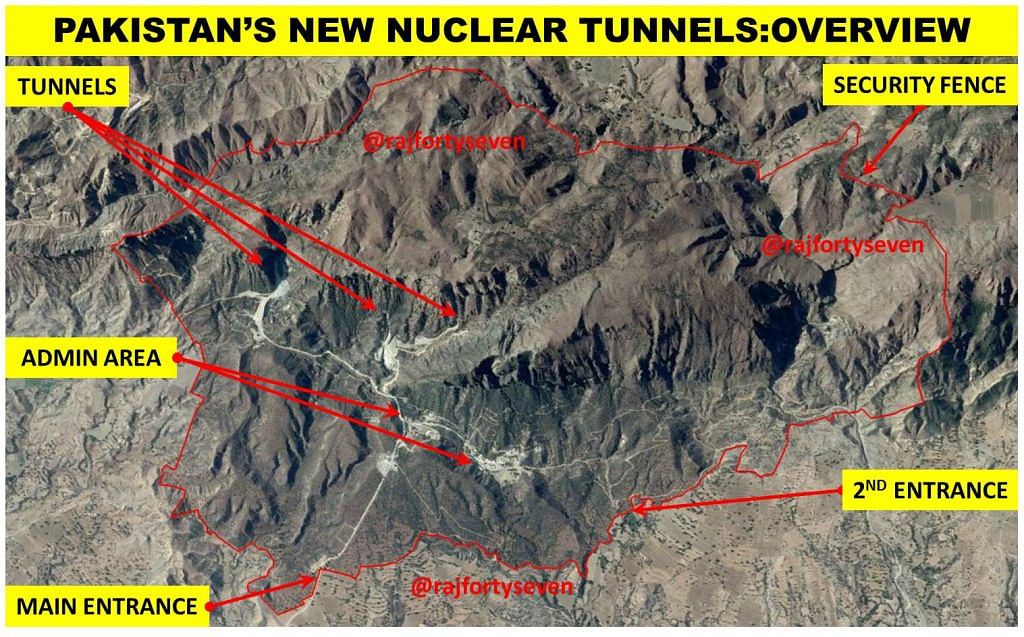
The new facility consists of three tunnels, probably interconnected under the mountain with each other. Construction of the facility started somewhere before 2009 and was still continuing as of December 2016.
The pace of construction indicates that possibly a small group of specialised engineers and construction staff has been working on this project permanently. The slow speed is suggestive of construction under the aegis of Frontier Works Organisation or FWO of the Pakistan Army.
It has an outer security fence with two entrances. There is also an administrative area larger than most tunnelled facilities seen in Pakistan. The outer fence is much larger than the tunnelled area indicating possible future expansion towards the north.
Three tunnels
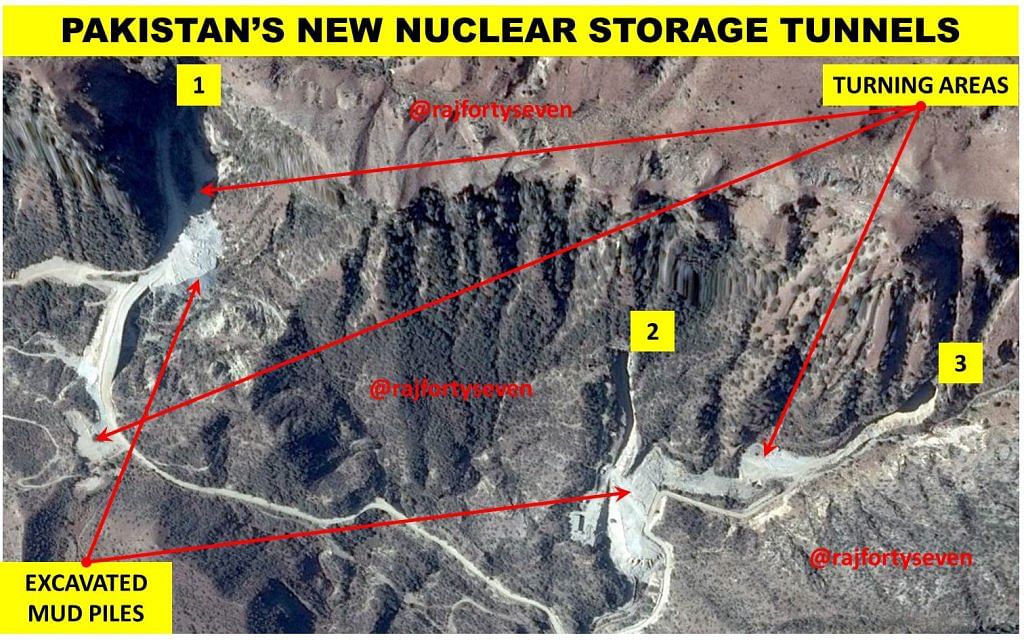
The hot area comprises three tunnels.
The tunnel entrances (10 m in height and 10 m in width) are deeply cut into the mountains. They are separated from each other by a distance of 450-750 metres. They are connected by large roads of approximately 10 to 20 metres in width.
The roads widen at corners for obvious reasons of providing enough turning space for large tractor erector launchers (TELs) hidden inside these tunnels.
These three entrances possibly connect with each other inside the mountain to form a long tunnel of approximately 1.2 km. The excavated earth piles also suggest similar size of tunnel inside the mountain.
Security of the area
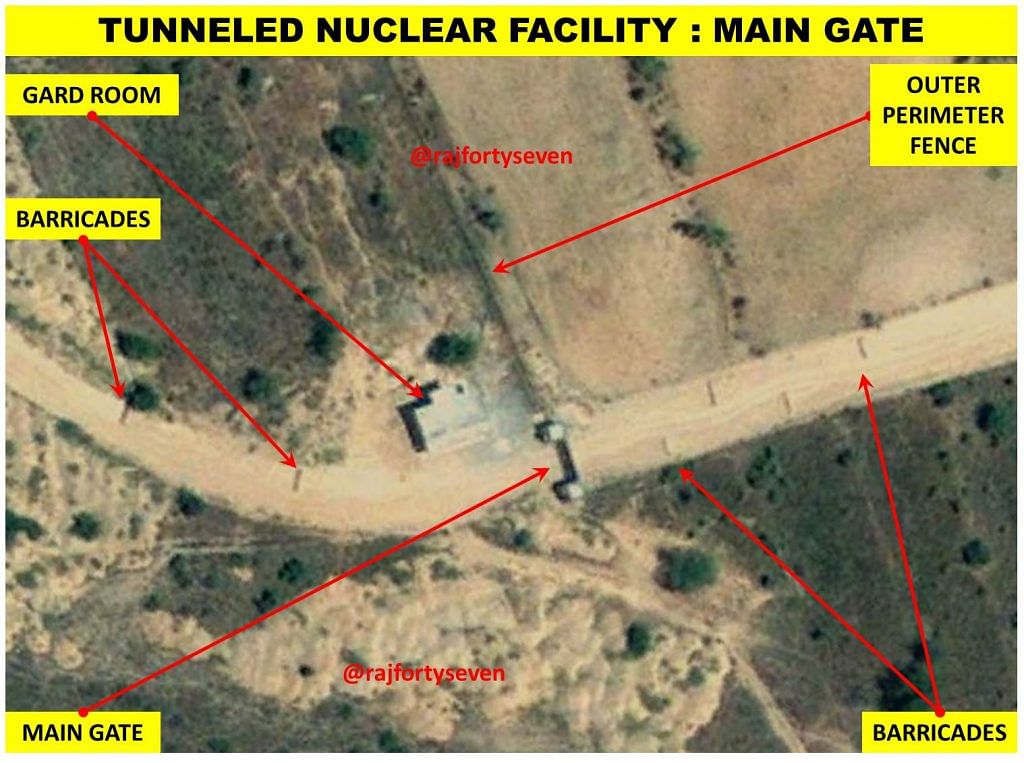
The area is secured with a wire fence all around. The facility has been provided with two entrances.
The main entrance is more than 3 m high solid gate. The road approach to this main entrance has four barricades before the gate and two after. These barricades would make a direct vehicular hit on the gate very difficult.
There are layered fencing around the hot area and administrative areas, which are not very clearly visible due to poor temporal resolution available in open source satellite imagery.
There is no proper air defence (AD) cover afforded to the facility although indications of some trials by short range AD have been observed.
Administrative area
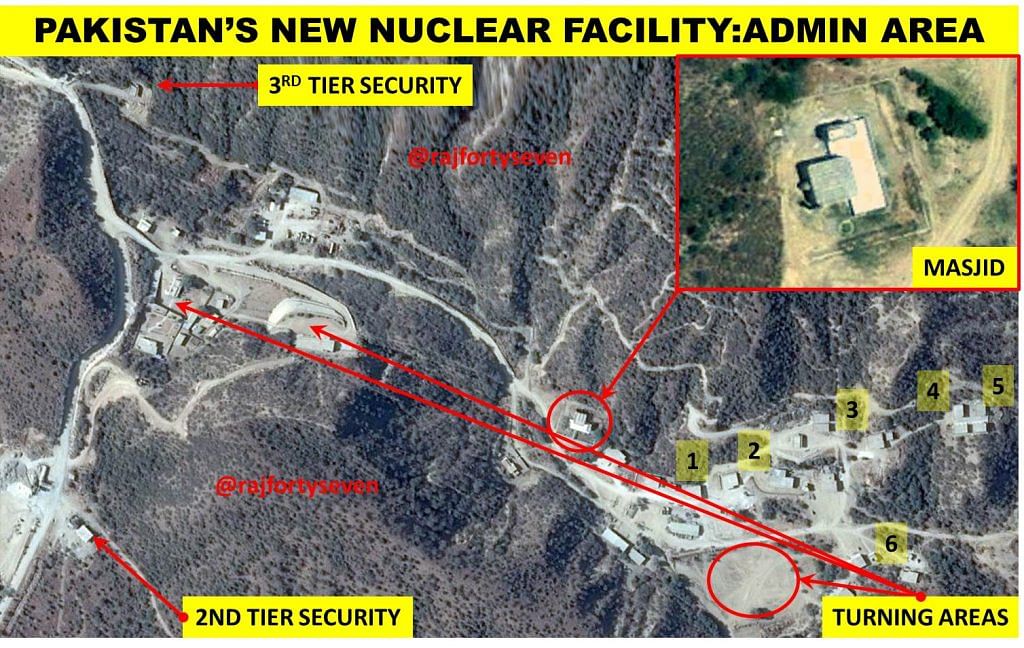
The administrative area consists of a large number of buildings mainly for parking of vehicles. It also has a mosque located centrally, which was constructed before the rest of the buildings.
Some of the buildings look like high-bay garages meant for maintenance of vehicles and missiles. There six special garages possibly for holding TELs during high alert status. There are another six garages, which may hold air defence systems in future.
There are six turning areas, which could be used for turning direction of TELs. These could also be used as launch pads if properly marked and registered. One of the turning areas is a huge circular area of almost 80 m diameter.
Space for between 12 to 24 nuclear weapons
The size of this facility inside the mountain suggests that it can hold at least 12 to 24 nuclear weapons complete with TELs. India needs to monitor this site very frequently. It needs to be added to the list of own ‘Priority-I’ targets.
The fact that the project has received a no-objection certificate despite its location being earthquake-prone, according to a Pakistan Atomic Energy Commission study, is very surprising.
Col Vinayak Bhat (retd) is a Military Intelligence veteran of the Indian Army with vast experience of satellite imagery analysis. He has worked as Chinese interpreter and is a specialist on PLA and Pakistan’s Armed Forces. He tweets @rajfortyseven


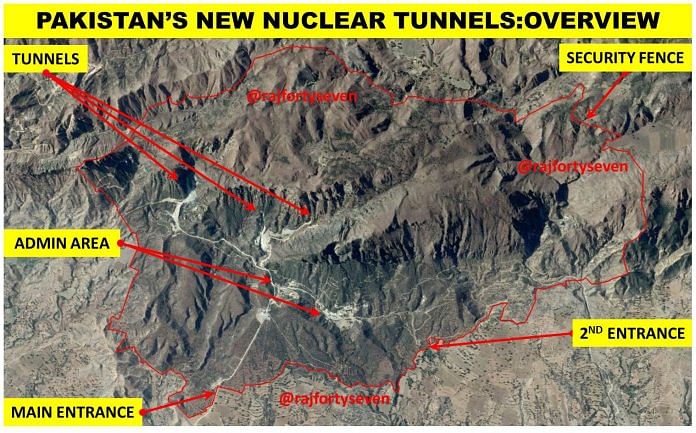

The authenticity of these reports is very ambiguous, but if it is true then there is a hidden message for IAF chief in this news, who is dreaming for attacking Pakistan nukes. Pakistan makes these three tunnels you are reporting, in a zik zak fashion. So that an attacker aircraft cannot tackle it in one run. These facilities are so secure that even if terrorist have entered into the facilities it would be of no use because the technology Pakistan is using is quite complex. IAEA also had said that Pakistan is using multiple sort of switches, multiple sort of ways to deploy its nuclear assets. So it cannot be done just by some militants walking into the facilities.
Its Pakistan’s sovereign right to secure its nuclear weapons and if that place has been selected, its best for Pakistan. But in case of India, we have seen secret nuclear cities being built to make more weapons. Unlike India, Pakistan is doing lot better with regards to safety and security of its nuclear arsenal. We hope, in security practices, India follows Pakistan.
The above article shows how desperately Indians are obsessed with Pakistan and its national assets. Thats they find it quite easy to target them and time and again make them highlighted in front of media(print). I mean this is quite kiddish the way author has tried to defamed Pakistan’s nuclear weapons while emphasizing on the locations where nuclear weapons are stored and the data is so vulnerable that anybody can get access to it. I mean seriously??? Get a life u poor Indian Losers… Stop pointing towards Pakistan’s nuclear weapons and focus on whats going on on your own soil. Where people are not having access to toilets.
OVER the past decade, a hostile consensus has emerged against Pakistan. The main reasons for this adverse evolution are: growing Islamophobia after 9/11; visceral opposition to a Muslim nuclear weapon state; the divergence on Afghanistan; and, most importantly, Pakistan’s strategic relationship with China.
I think..There is no need of any enclosure by anyone ..no place us secret …Latest sattelite tech can search,locate,reach anywhere .
So,it’s good for store n protect. Not for use.
If a single is used .Ready to eat dozens.
That’s all.
How about India…… did Mr. MODI has any plan to do some sort of modification ? Or simply busy in chest beating….☺☺
Wonder why is it clandestine?
The main defence of a nuclear arsenal site is its anonymity , hence I doubt whether it is purposely circulated by paki govt to divert attention.
No amount of barriers would be effective if the area is attacked with megaton sized nuclear weapons first, because , the amount of radiation, debris, smoke, heat and other effects of a nuclear blast would render any human habitation impossible there. All weapons will be trapped inside the tunnel, the approach roads would be destroyed, all people stationed there would be burried alive..
Every state has a sovereign right to plan it’s defences and offences.india has its own rights to plan it’s weapons.why bother about Pakistan.
Are you retired or supposedly retired like Kulbushan Yadav or just a little bit sad.
Great reply bro.
Bro Indian Trolls have been promoted from zealot, profane, haters to fake news and blogging.
This is called spreading misinformation and creating unecessary hysteria but sadly any sane man can see through this B.S.